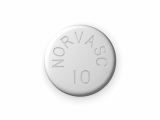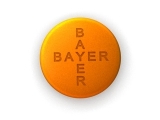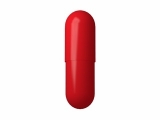What does ndc mean in pharmacy terms
In the field of pharmacy, there are numerous terms and acronyms that are used to describe different aspects of medications and their distribution. One such term is NDC, which stands for National Drug Code. Understanding the meaning of NDC is essential for pharmacists and healthcare professionals, as it plays a crucial role in medication labeling, tracking, and identification.
The National Drug Code is a unique identifier assigned to each medication product by the Food and Drug Administration (FDA) in the United States. It consists of a three-segment numeric code that includes the labeler code, product code, and package code. The labeler code identifies the manufacturer or distributor of the medication, the product code identifies the specific medication and its strength or dosage form, and the package code identifies the package size or type.
The NDC plays a significant role in ensuring the accuracy and safety of medication distribution. Pharmacies rely on NDCs to properly identify and track medications throughout the supply chain, from the manufacturer to the patient. This code is used for inventory management, drug recalls, and reimbursement purposes. It also helps prevent medication errors by providing a standardized system for identifying and labeling medications.
Overall, understanding the meaning of NDC is crucial for pharmacy professionals in order to ensure the safe and effective distribution of medications. By properly utilizing NDCs, pharmacists can accurately identify and dispense medications, track their inventory, and ensure patient safety. It is an essential tool in the pharmacy industry and plays a vital role in the overall healthcare system.
The Essence of NDC in Pharmacy
The National Drug Code (NDC) plays a fundamental role in the pharmacy industry, serving as a unique identifier for drugs. It is a vital code that helps in the identification, authentication, and tracking of pharmaceutical products throughout their lifecycle. The NDC system provides valuable information that allows healthcare providers, pharmacists, and patients to accurately and efficiently manage medications.
Identification: The NDC serves as a universal product identifier for drugs, helping to distinguish one medication from another. It consists of 11 digits and is divided into three segments - the labeler code, product code, and package code. The labeler code represents the manufacturer or distributor of the drug, while the product code provides information about the specific drug formulation. The package code, on the other hand, identifies the package size and type.
Authentication: With the NDC, pharmacists can verify the authenticity of medications before dispensing them to patients. By comparing the NDC on the packaging or label of the drug with the codes in the database, pharmacists can ensure that the medication is genuine and has not been tampered with. This helps to prevent counterfeit drugs from entering the market and posing a risk to patient safety.
Tracking: The NDC enables accurate tracking of medications from manufacturing to distribution and dispensing. It allows for the monitoring of product recalls, expiration dates, and lot numbers, ensuring that patients receive safe and effective drugs. Additionally, the NDC provides valuable information for billing and reimbursement purposes, as it is widely used in pharmacy claims processing and insurance systems.
Efficiency: By utilizing the NDC system, healthcare providers and pharmacists can streamline medication management processes. The unique identifier helps eliminate confusion and errors associated with similar drug names or packaging, improving patient safety. It facilitates accurate documentation, inventory management, and prescription filling, ultimately enhancing the overall efficiency of pharmacy operations.
Demystifying the NDC Code
The National Drug Code (NDC) is a unique identifier assigned to each medication product that is sold in the United States. This code is used in the pharmacy industry to track and identify medications, ensuring accuracy and efficiency in the distribution process.
The NDC code is composed of three separate segments: the first segment represents the labeler or manufacturer of the medication, the second segment represents the product code, and the third segment represents the package code. These segments combined create a 10-digit code that is used to identify a specific medication.
Labeler Segment: The labeler segment of the NDC code represents the manufacturer or distributor of the medication. This segment is assigned by the Food and Drug Administration (FDA) and is unique to each company. It allows for easy identification of the specific manufacturer or distributor of a medication.
Product Segment: The product segment of the NDC code represents the specific medication product. This segment is also assigned by the FDA and is unique to each medication. It allows for easy identification of the specific medication and distinguishes it from other products within the same company.
Package Segment: The package segment of the NDC code represents the specific package size and type of the medication. This segment is assigned by the manufacturer or distributor and is unique to each package size and type. It allows for easy identification of the specific package size and type within a specific medication product.
By understanding the meaning of each segment of the NDC code, pharmacists and healthcare professionals can ensure accurate identification and dispensing of medications. It also helps in inventory management and tracking of medication recalls or issues. The NDC code is an essential tool in the pharmacy industry and plays a vital role in maintaining patient safety and medication quality.
Unlocking the Pharmacy Terminology
1. NDC:
The National Drug Code (NDC) is a unique numeric identifier assigned to drugs in the United States. This code consists of three segments: the labeler code, the product code, and the package code. The labeler code identifies the manufacturer or distributor of the drug, the product code represents the specific drug formulation and strength, and the package code indicates the type and size of the package.
2. Brand Name versus Generic Name:
When it comes to medication, it is essential to understand the difference between brand name and generic name. The brand name, also known as the trade name, is the name given by the pharmaceutical manufacturer to promote and market their specific drug. On the other hand, the generic name, also known as the nonproprietary name, is the scientific name or common name of the drug, which is derived from its chemical composition. Generic drugs are typically less expensive and have the same active ingredients as their brand name counterparts.
3. Dosage Forms:
Pharmaceutical drugs come in various dosage forms, each designed to deliver the medication in a specific way. Some common dosage forms include tablets, capsules, solutions, suspensions, creams, ointments, and injections. Each dosage form has its own set of instructions for administration, such as swallowing tablets or capsules, applying creams topically, or injecting liquids into the body.
4. Prescription versus Over-the-Counter (OTC):
Prescription drugs require a written order from a healthcare professional, usually a doctor, dentist, or nurse practitioner. These drugs are often more potent, have higher risks, and require careful monitoring. In contrast, over-the-counter (OTC) drugs can be purchased without a prescription. These medications are typically used to treat common ailments or symptoms and have undergone less rigorous testing compared to prescription drugs.
5. Therapeutic Equivalence:
Therapeutic equivalence refers to the comparison of pharmaceutical products that have the same active ingredients, dosage form, strength, and route of administration. Products that are therapeutically equivalent are considered interchangeable, meaning they produce the same therapeutic effect in patients. This concept is important in pharmacy as it allows for the substitution of medications, such as prescribing a generic drug in place of a brand name drug.
Understanding the Importance of NDC in Healthcare
Accurate Identification of Medications
The National Drug Code (NDC) is a unique, three-segment identifier used in the healthcare industry to accurately identify prescription and over-the-counter medications. This code helps medical professionals, pharmacists, and insurance providers to accurately track and identify specific drugs, ensuring that patients receive the correct medications.
By using the NDC, healthcare providers can easily access important information about a particular medication, including its manufacturer, dosage form, and packaging size. This ensures that the prescribed medication matches the one intended by the healthcare professional and helps prevent medication errors that could have serious consequences for patients.
Ensuring Patient Safety
One of the main reasons why the NDC is important in healthcare is because it plays a crucial role in ensuring patient safety. By accurately identifying medications, the NDC helps healthcare providers and pharmacies to prevent medication errors, such as dispensing the wrong drug or the wrong dosage. These errors can lead to harmful drug interactions, allergic reactions, or other adverse effects.
Additionally, the NDC allows for better tracking and monitoring of medication usage, enabling healthcare providers to identify potential patterns of misuse or abuse. This helps in the prevention of prescription drug abuse and diversion, promoting a safer healthcare system for all patients.
Efficient Inventory Management
In addition to improving patient safety, the NDC also plays a crucial role in efficient inventory management within healthcare settings. By uniquely identifying each medication, the NDC enables healthcare providers and pharmacies to effectively track and manage their inventory levels.
With the help of electronic health records and inventory management systems, healthcare facilities can use the NDC to monitor medication usage, expiration dates, and reorder points. This ensures an adequate supply of medications and reduces the risk of medication shortages or stockouts, which can have detrimental effects on patient care.
The NDC also enables pharmacies to efficiently manage their ordering processes, as they can easily identify which medications need to be restocked and in what quantities. This helps to streamline workflow processes and ultimately improves the overall efficiency of the healthcare system.
The Role of NDC in Drug Identification and Safety
The National Drug Code (NDC) plays a crucial role in drug identification and safety within the pharmacy industry. This unique code system is assigned to every medication product available in the United States, including both prescription and over-the-counter drugs. The NDC contains a combination of three segments: the labeler code, the product code, and the package code. These segments provide essential information about the manufacturer, the specific drug formulation, and the packaging configuration.
The NDC serves as a universal identifier for medications, allowing healthcare professionals, pharmacists, and patients to accurately identify and differentiate between various drugs. This is particularly crucial when dealing with medications that have similar names or medications from different manufacturers that may have different formulations.
The NDC greatly contributes to drug safety by playing a crucial role in medication error prevention. Pharmacists and healthcare professionals use the NDC to verify the accuracy of a prescribed drug and confirm that the correct medication is being dispensed to the patient. By cross-referencing the NDC, they can ensure that the right drug from the right manufacturer with the right formulation is provided to the patient.
In addition, the NDC is essential for tracking and monitoring drug recalls and adverse events. When a drug recall or adverse event occurs, the NDC helps healthcare professionals quickly identify the affected products and take appropriate actions to mitigate any potential harm to patients.
Moreover, the NDC is an invaluable tool for medication billing and reimbursement purposes. Insurance companies and healthcare providers rely on the NDC to accurately identify and classify medications for proper billing and reimbursement.
In summary, the National Drug Code plays a vital role in drug identification and safety. It ensures accurate identification of drugs, helps prevent medication errors, facilitates tracking of drug recalls and adverse events, and enables proper medication billing and reimbursement.
Follow us on Twitter @Pharmaceuticals #Pharmacy
Subscribe on YouTube @PharmaceuticalsYouTube





Be the first to comment on "What does ndc mean in pharmacy terms"